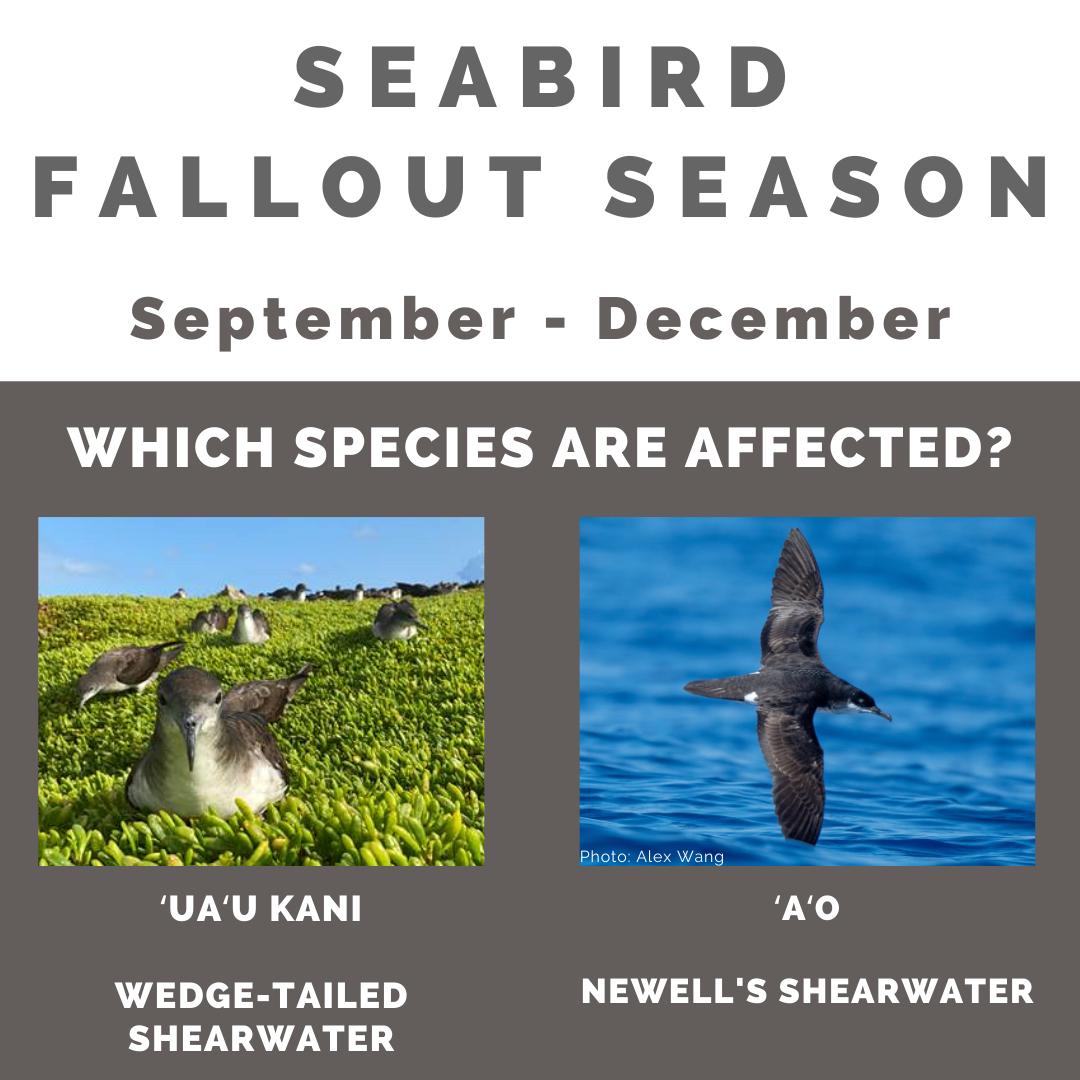Seabird Fallout Season: September thru December
Posted on Sep 13, 2021
What is Seabird Fallout?
Fallout is a phenomenon primarily affecting young seabirds (petrels and shearwaters) that leave their nest for the first time, but can also affect adults from time to time. These seabirds use natural lighting such as moonlight to navigate out to sea where they spend their time feeding. They can become disoriented by our artificial lighting (street lights, building lights, etc.) and either circle lights or collide with structures, and may fall to the ground due to exhaustion or injury from collision. Once on the ground, they become extremely vulnerable to predators or may be hit by vehicles.
During September through December, the majority of young birds attempt their first flight out to sea and are most at risk.
Anyone finding a fallen or injured seabird is asked to do the following:
1. Determine if it needs to be rescued:
Often young birds stay near their nest burrows and do not need intervention. These birds will not need to be rescued and should be left alone. If you are uncertain of whether the bird needs help, please call the Division of Forestry and Wildlife or Hawaii Wildlife Center for assistance.
if a bird is found unresponsive or in an unsecure environment (i.e. side of the road, next to a building, etc.), it needs to be rescued.
2. Find and prepare an appropriate sized, well ventilated carrier (air holes)
Place a clean, soft cloth at bottom of carrier, such as a T-shirt
3. With caution, approach bird from behind and use a lightweight towel to gently pick it up and transport it to the carrier.
4. Place the container in a quiet and dark place, away from people, animals, and loud noises
5. DO NOT give food or water to the bird and do not leave any in the container.
6. Note the time and location of where you found the bird.
7. Transport the bird to a designated drop off location if available, licensed wildlife rehabilitation facility or any veterinary clinic as soon as possible. See island-specific contact information and licensed rehabbers https://dlnr.hawaii.gov/wildlife/downed-wildlife-contact-details/.
8. Birds can be held overnight if transportation to a drop off location is not immediately available. Keep the carrier inside or in an enclosed garage away from people and animals until it can be transported.
What happens to the birds once they are dropped off?
Birds will be evaluated and released in suitable habitat if they are assessed to be healthy. Birds needing further treatment will be medically stabilized and rehabilitated until ready for release if assessed to be healthy. This work is provided by a small group of professional wildlife rehabilitators and biologists with assistance from trained volunteers. The public’s support of our downed seabird programs is crucial to their success. Your willingness to transport birds to established drop-off sites is much appreciated!

